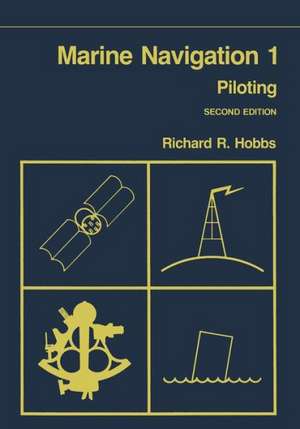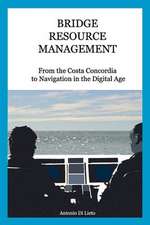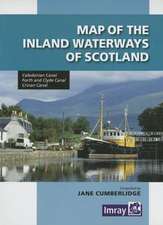Marine Navigation 1 : Piloting: Fundamentals of Naval Science Series, cartea 4
Autor Richard R. Hobbsen Limba Engleză Paperback – 27 aug 2012
Preț: 397.38 lei
Nou
Puncte Express: 596
Preț estimativ în valută:
76.04€ • 79.76$ • 63.30£
76.04€ • 79.76$ • 63.30£
Carte tipărită la comandă
Livrare economică 01-15 aprilie
Preluare comenzi: 021 569.72.76
Specificații
ISBN-13: 9789401173728
ISBN-10: 9401173729
Pagini: 368
Ilustrații: XV, 348 p. 99 illus., 38 illus. in color.
Dimensiuni: 178 x 254 x 19 mm
Greutate: 0.64 kg
Ediția:1981
Editura: SPRINGER NETHERLANDS
Colecția Springer
Seria Fundamentals of Naval Science Series
Locul publicării:Dordrecht, Netherlands
ISBN-10: 9401173729
Pagini: 368
Ilustrații: XV, 348 p. 99 illus., 38 illus. in color.
Dimensiuni: 178 x 254 x 19 mm
Greutate: 0.64 kg
Ediția:1981
Editura: SPRINGER NETHERLANDS
Colecția Springer
Seria Fundamentals of Naval Science Series
Locul publicării:Dordrecht, Netherlands
Public țintă
ResearchCuprins
1 The Art of Navigation.- 2 The Shipboard Navigation Department Organization.- Duties of the Navigator.- Relationship of the Navigator to the Command Structure.- The Navigator’s Staff.- 3 The Piloting Team.- The Navigator and His Plotter.- The Bearing Recorder.- The Bearing Taker.- The Radar Operator.- The Echo Sounder Operator.- The Piloting Team Routine.- Conclusion.- 4 The Nautical Chart.- The Terrestrial Coordinate System.- Chart Projections.- Chart Interpretation 26 Determination of Position, Distance, and Direction on a Mercator Chart.- Production of Nautical Charts.- The Chart Numbering System.- The Chart Correction System.- Summary.- 5 Navigational Publications.- Catalog of Nautical Charts, Publication No. 1-N.- NOS Nautical Chart Catalogs.- Coast Pilots.- Sailing Directions.- Fleet Guides.- Light List.- List of Lights.- Tide and Tidal Current Tables.- Pilot Charts.- Distance Between Ports, Publication No. 151.- Almanacs.- Reference Texts and Manuals.- Publication Correction System.- Summary.- 6 Visual Navigation Aids.- Characteristics of Lighted Navigation Aids.- Identifying a Navigational Light.- Computing the Visibility of a Light.- Buoys and Beacons.- The U.S. Lateral System.- The IALA Combined Cardinal and Lateral System.- Use of Buoys and Beacons During Piloting.- Summary.- 7 Navigational Instruments.- The Measurement of Direction.- Measurement of Distance.- Measurement of Speed.- Measurement of Depth.- Plotting Instruments.- Miscellaneous Instruments.- Summary.- 8 Dead Reckoning.- Determining the Fix.- Principles of the Dead Reckoning Plot.- The Running Fix.- The Estimated Position.- The Track.- Summary.- 9 Shipboard Compasses.- The Magnetic Compass.- The Gyrocompass.- Summary.- 10 Radar.- Characteristics of a Surface-Search/Navigational Radar.- TheRadar Output Display.- Interpretation of a Radarscope Presentation.- Use of Radar During Piloting.- Summary.- 11 Tide.- Causes of Tide.- Types of Tides.- Tidal Reference Planes.- Predicting Height of Tide.- The Bridge Problem.- The Shoal Problem.- Effect of Unusual Meteorological Conditions.- Summary.- 12 Current.- Ocean Current.- Tidal Current.- Wind-driven Currents.- Summary.- 13 Current Sailing.- The Estimated Current Triangle.- Solving the Estimated Current Triangle.- The Estimated Position Allowing for Current.- Determining an EP from a Running Fix.- The Actual Current Triangle.- Summary.- 14 Precise Piloting and Anchoring.- Ship’s Handling Characteristics.- Use of Advance and Transfer During Piloting.- Anchoring.- Summary.- 15 Voyage Planning.- Time.- The Voyage-Planning Process.- Optimum Track Ship Routing.- Miscellaneous Considerations.- Summary.- Appendix A. Chart No. 1 285.- Appendix B. Abbreviations and Symbols Commonly Used in Piloting.












